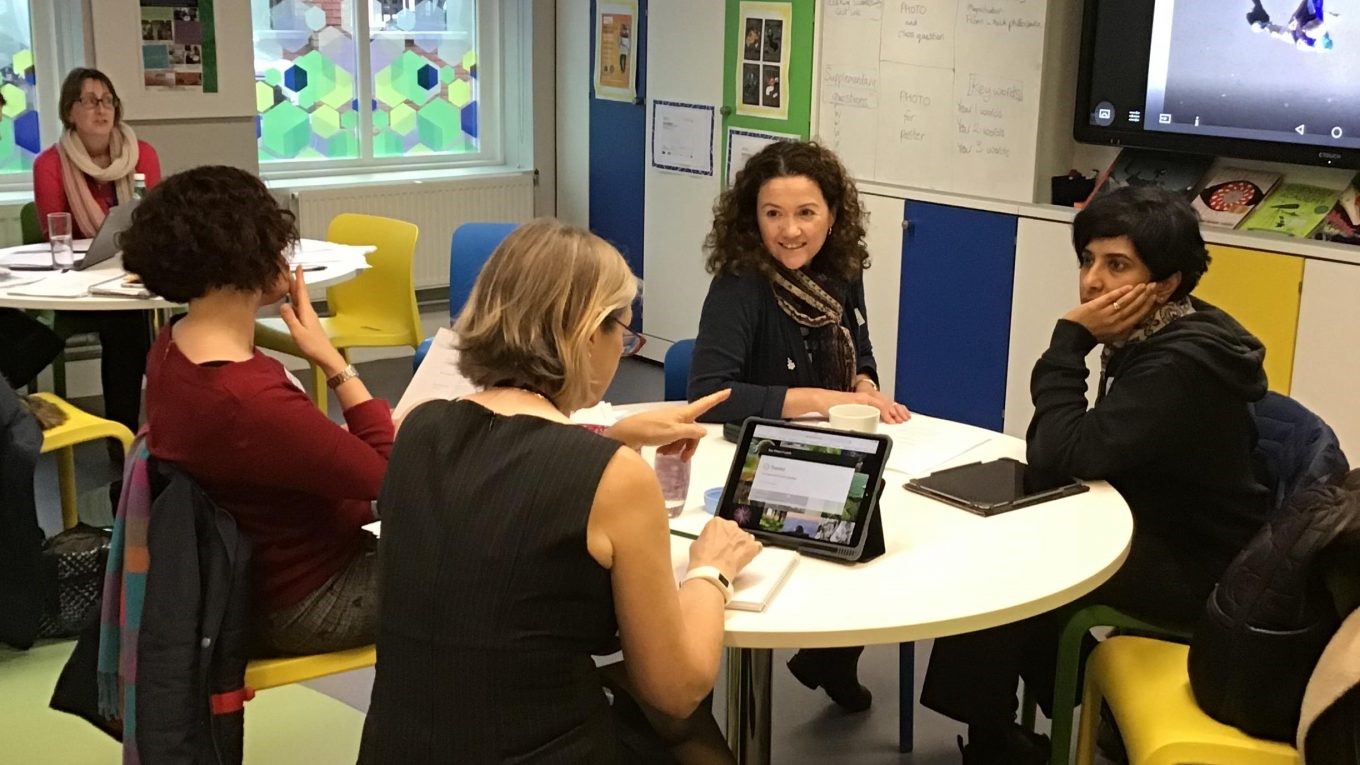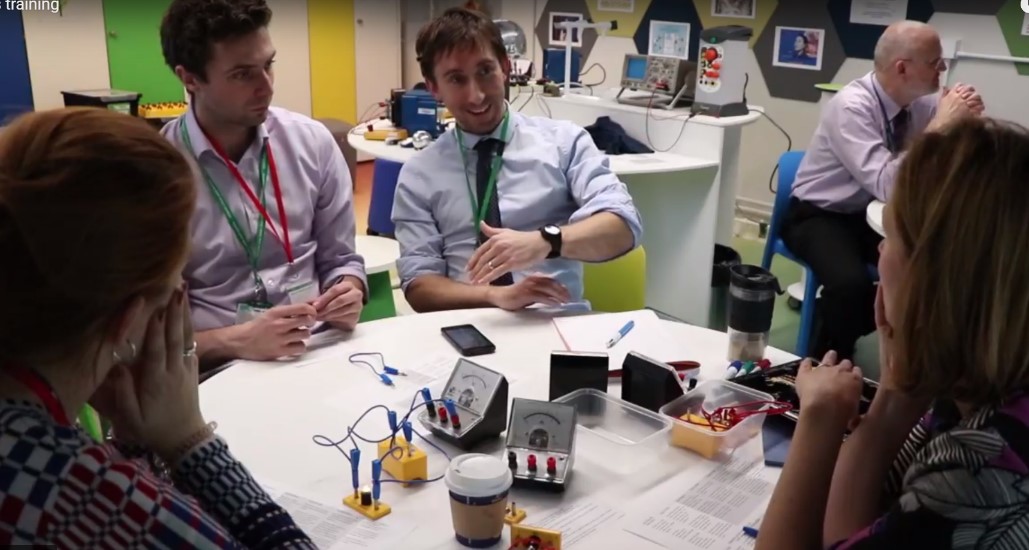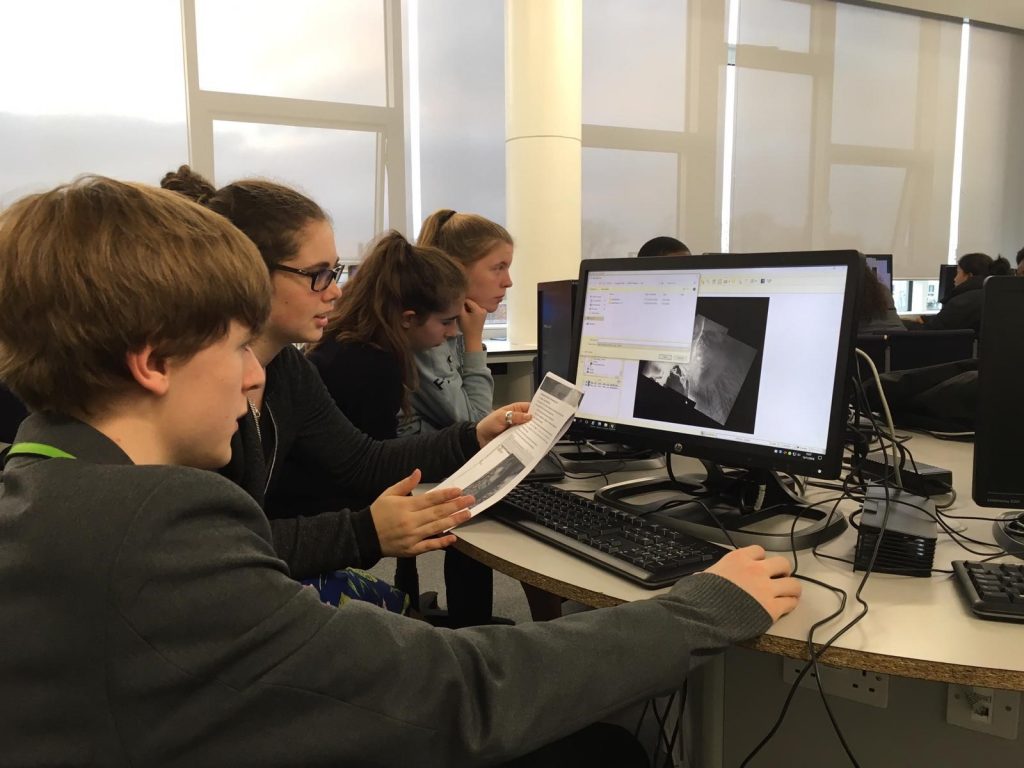Nicola Kersley, co-ordinator of Charities and Partnerships at WHS, celebrates the government’s recent push for more ISSPs and looks at their value to all of the schools involved, and looks at how Wimbledon High is embracing partnerships.
ISSPs on the political agenda
Hard to remember though it may be, there was a time that the government talked about things other than Brexit; back in those halcyon days, Theresa May had her focus well and truly on education [1]. Her plans were intended to provide the backbone for her social mobility agenda, and included: the expansion of selective education in the form of grammar schools, the removal of barriers to good schools (for example selection based on faith), and universities and schools in the private sector giving more back to the state sector [2]. Acting swiftly on her ‘education, education, education’ moment, it took May’s government only two months to publish a green paper outlining its plans for the last of these, the partnerships strand to the strategy [3].
Partnerships between state and private schools were first formally given government backing in 1998 [4] when there was funding provided, and they have gone in and out of vogue ever since. May’s new initiative is in the process of renewing their position in the political limelight, and more power to her. Partnerships between schools should be a key feature of our education system, benefiting not only schools as institutions, but also the children they have a duty of care to, and even the wider community as a whole. This article addresses the arguments in favour of these partnerships and cites examples from Wimbledon High to demonstrate the successes that our reasonably young Teach Together partnership program is already having.
Benefits to Schools
The benefits of general collaboration have been explored in depth by Alex Farrer in November 2018’s WimTeach article [5] so I will avoid rehashing the details and rather stick to the more niche scenario of inter-school collaboration. Most obviously, collaboration provides opportunities for economies of scale [6]; if Wimbledon High hosts an Explore lecture and opens it up to attendees from its partner schools the cost per capita is reduced. The same applies for training days for staff and trips to visit universities.
Schools benefit from partnerships because staff benefit from partnerships [4]. It is through the breadth of experience that teaching practice flourishes, and working with pupils and staff from different schools, and indeed different socio-economic backgrounds, epitomises this. Working in ISSPs ensures that we do not become complacent in our own bubbles and that we are aware of other educational landscapes, often to mutual benefit [7]. For example, an ISSP can enable significant sharing of experiences and strategies regarding pastoral policies. Whilst independent schools are more susceptible to some issues pastorally and state schools are more susceptible to others, neither are immune to anything; the larger the knowledge base the better [6].

Partnerships also allow for resource sharing; it is undeniable that we in the independent sector are able to access resources and facilities closed off to many state schools. One prong of our partnership work at Wimbledon High is in the provision of access to facilities like our swimming pool, our music facilities (including the secondment of staff), and our Latin teachers allowing for immeasurable benefit to state school pupils, staff and departments. In the Physics department, our highly experienced lab technician is providing support to non-specialist technicians at some of our partner schools, the impact of which is hugely beneficial to those Physics departments and their ability to provide experience in practical work for pupils.

Benefits to students
At Wimbledon High, one of our most wide-reaching expressions of partnership work is in our Teach Together program. This sees our pupils deliver well-prepared lessons and support to younger partner school pupils, supported by experienced teachers to ensure that benefit is maximised. The WHS girls involved are knowledgeable and respectable sixth formers and year 11s who the younger state school pupils can look up to, not only as ambassadors for their subject but also as aspirational role models. An excellent example of this is the work that WHS girls do every week mentoring Year 8s at Tolworth Girls’ School, a hugely successful project that sees our girls use their peer-counselling training to help Tolworth pupils think through their problems logically and level-headedly. For the state schoolchildren involved there can be only good done by attending extra sessions in a subject in which they need more support, be that academic or pastoral.

The benefits to the independent school participants are less obvious but certainly no less meaningful. Teachers know better than most that you do not really understand something until you have taught it, and it is in this assertion that the greatest benefit to the pupils lies. By preparing and delivering sessions for younger learners, the pupils are not only reinforcing their understanding of a topic [8] but also enhancing their ability to express their knowledge clearly, an undeniably important skill not least for university and job interviews. At Wimbledon High, we have a vast range of projects that allow our girls to inspire younger pupils with their chosen subjects, such as teaching Science to local primary schools at St Boniface and St Matthews. The girls are able to really develop their academic rigour when preparing the sessions, then hone their communication skills as they deliver them. When we work with other cohorts more similar in age, the abilities to collaborate and compromise are necessities. These skills are essential in projects like our science scheme with Ark Putney Academy (APA) in which our Year 11s, 12s and 13s are working with Year 10s from APA to collect real data about melting ice caps for scientists at the centre for polar observation and modelling [9]. Work like this is an invaluable practice in confidence building and teamwork.

Measuring impact
The question for us working in partnerships is not whether or not there is a mutual benefit provided by partnership work because we know it to be fact. Rather, the question is how to demonstrate quantifiably this benefit. As an independent school, not only are we interested in measuring the value of each of our projects for the sake of growth and improvement, we are also required to report to the Independent Schools Council about the impact that they are having [10]. Evidence gathered is often qualitative and anecdotal making the impact difficult to quantify [11], but by using questionnaires issued to both staff and pupils, we have been able to track certain success measures such as interest in the subject and confidence. We are also able to look at tracking data of those pupils that we are working with and hope to see progress by using baseline data and tracing attainment over the course of the year, albeit a method made problematic due to significant external variables.
Conclusion
The government’s renewed push for ISSPs is a truly welcome initiative that we are embracing at Wimbledon High. By sharing resources and widening our circles of communication, staff and schools are already benefitting. Partnerships allow cohesion between the two sectors, and a breaking down of barriers and negative preconceptions. They enable teachers and support staff to benefit from high-quality professional development and the sharing of expertise [4].
Partnerships are also great for pupils involved, providing opportunities for learners from widely differing backgrounds to interact with each other in a positive and often innovative learning context. Those activities relating to academics are beneficial to all parties involved, providing support to the younger pupil being taught, and a revision opportunity and confidence builder for the pupil delivering the lesson. They foster imaginative, creative and exciting classroom and extracurricular provision. Mentoring projects give our girls excellent experience in peer counselling and provide positive role models for the state schoolchildren.
The challenge that we face moving forward is how to measure the impact that we instinctively know that we are having. We will be working over the next year on formulating meaningful measurement tools to provide quantifiable data, whilst we continue to expand the program to ensure that it is as wide-reaching and impactful as possible.
References
| [1] | T. May, “Why I’m giving education a huge boost,” The Telegraph, 7 March 2017. |
| [2] | Lexington Communications, “Theresa May’s education education education moment,” 19 January 2019. [Online]. Available: http://lexcomm.co.uk/theresa-mays-education-education-education-moment. |
| [3] | Department for Education, “Schools that work for everyone,” Department for Education, London, 2016. |
| [4] | Ofsted, “Independent/State School Partnerships,” Ofsted, London, 2005. |
| [5] | A. Farrer, “The Importance of Collaborative Learning,” Wimbledon High School, London, 2018. |
| [6] | D. P. Armstrong, “Effective school partnerships and collaboration for school improvement: a review of the evidence,” Department for Education, London, 2015. |
| [7] | J. Turner, “Building bridges: A study of independent-state school parterships,” National College for School Leadership, Nottingham, 2004. |
| [8] | K. Kobayashi, “Interactivity: A Potential Determinant of Learning by Preparing to Teach and Teaching,” Frontiers in Psychology, Shizuoka, 2019. |
| [9] | P. B. Parker, “IRIS MELT – Introducing the Challenge,” IRIS, [Online]. Available: http://www.researchinschools.org/projects/melt.html. [Accessed 02 03 2019]. |
| [10] | Department for Education, “Schools that Work for Everyone, Government consulation response,” Department for Education, London, 2018. |
| [11] | M. Bourne, “Independent State School Partnerships – impact of and lessons learnt,” Department for Education, London, 2017. |

